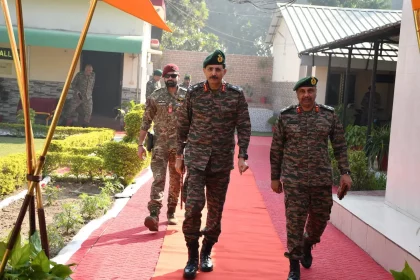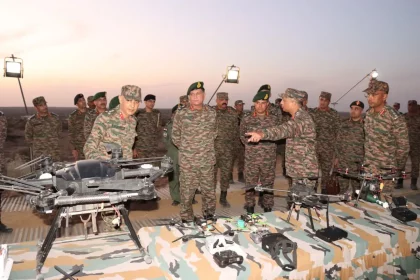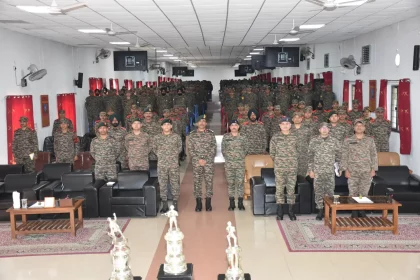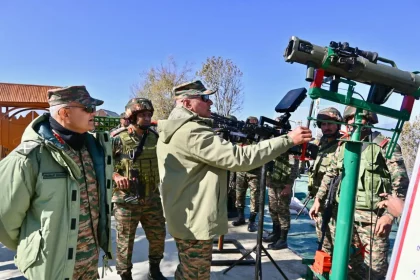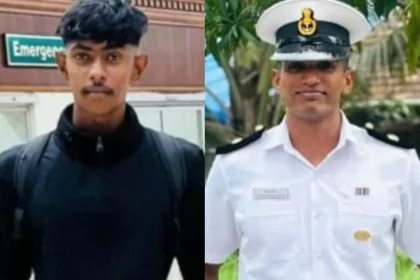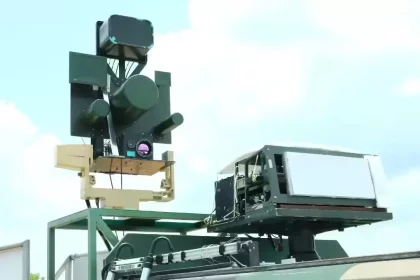Lt Gen Devendra Sharma Visits RVC Centre & College, Meerut
Lt Gen Devendra Sharma reviews advanced training infrastructure and lauds RVC Centre’s role in strengthening the Army’s operational capabilities.
Lt Gen Dhiraj Seth Reviews Indigenous Battlefield Technologies and Applauds Battle Axe Division’s Operational Excellence
Innovation and Atmanirbharta Take Centre Stage During Exercise Akhand Prahar Under Southern Command.
Combat Leadership Course Commences at NCO Academy, Dhana for Junior Leaders of Indian Army
Six-week training to enhance leadership, cognitive, and technical skills of NCOs amid evolving battlefield dynamics.
Lt Gen Pratik Sharma Reviews Anti-Infiltration Preparedness in North Kashmir
Northern Army Commander lauds troops for their professionalism, advanced surveillance systems, and high state of operational readiness along the LoC.
Chief Petty Officer Vishnu Raghunathan and Petty Officer Ananth Krishnan Killed in Tragic Road Accident in Bhopal
Chief Petty Officer Vishnu Raghunathan and Petty Officer Ananth Krishnan were en route to training when a speeding vehicle hit…
FleetRF Wins Indian Army Contract for Indigenous Anti-Jamming Drone Communication System
Delhi-based start-up FleetRF achieves a Make-in-India milestone with a fully indigenous, AI-enabled, anti-jamming communication system for Indian Army drones.

